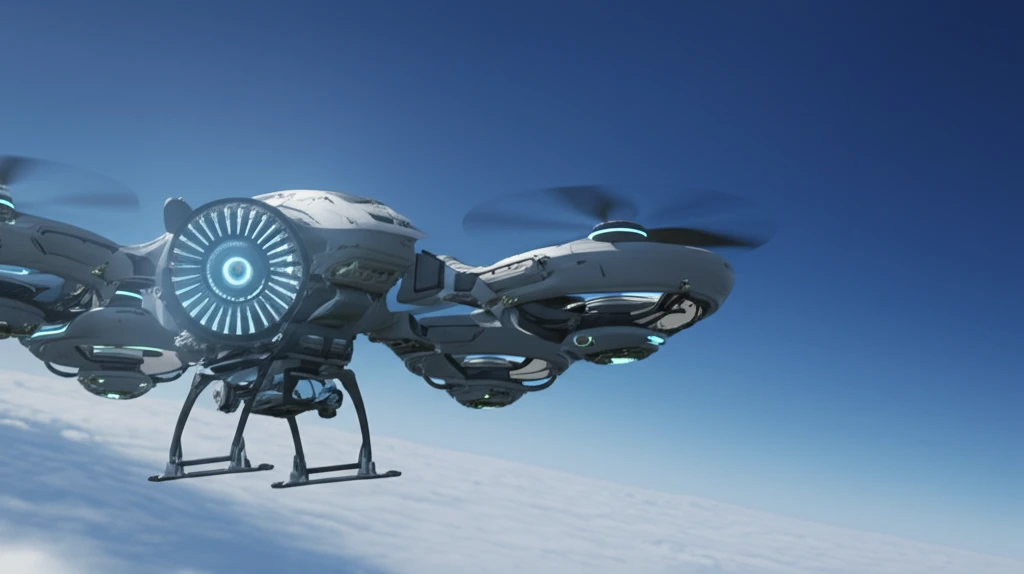
Power Up Your UAV: A Complete Guide to Propulsion Systems
"Discover the keys to efficient UAV flight! This guide covers everything from fuel-based engines to the latest in electric motor technology, ensuring your drone soars higher and longer."
In the dynamic world of unmanned aerial vehicles (UAVs), the propulsion system stands as the linchpin of successful flight. Whether you're an avid hobbyist or a seasoned professional, understanding the intricacies of UAV propulsion is crucial for achieving optimal performance. Every (non-glider) aircraft needs powerful, lightweight, and efficient ways to fly. For the small and medium UAVs, this means propellers. It's not easy to make propellers that change their angles, so usually, fixed-pitch propellers are used. Also, making new prime movers is expensive. This means that designers of small and medium UAVs often have to make hard choices to find the right propulsion from what's already out there.
The selection process involves navigating a landscape of trade-offs, balancing power, weight, efficiency, and cost. Long-endurance aircraft often benefit from gasoline-fueled internal combustion (IC) engines, leveraging multiple cylinders or engine configurations for sustained flight. Short-endurance systems, particularly those prioritizing low vibration, often favor battery-powered electric motors, a trend amplified by ongoing advancements in battery technology. Hybrid systems, combining IC engines and electric motors, offer yet another avenue for innovation, promising enhanced versatility and performance capabilities.
This article serves as your comprehensive guide to UAV propulsion systems, demystifying the technologies and strategies that power these remarkable machines. We'll explore the nuances of engine types, delve into the world of electric motors, examine the critical role of propellers, and shed light on the essential control systems that bring it all together. Let’s dive in.
Decoding Liquid-Fueled IC Engines

Liquid-fueled IC engines are a popular choice for small and medium-sized UAVs. These engines typically run on gasoline, methanol, or diesel, and come in two- or four-stroke configurations. When selecting an engine, key factors to consider include availability, weight, cost, power, and efficiency. Since developing custom engines is often cost-prohibitive, most UAV programs rely on commercially available options. For airframes weighing between 10 and 50kg, the selection of suitable spark ignition engines is limited, and diesel options are even scarcer. However, ongoing developments in UAV engine technology promise to expand these choices in the future.
- Fuel Type: Gasoline, methanol, or diesel.
- Engine Cycle: Two-stroke or four-stroke.
- Weight and Power: Balance for optimal performance.
- Fuel Efficiency: Essential for long-endurance flights.
The Future of UAV Propulsion
The world of UAV propulsion is constantly evolving, driven by the relentless pursuit of greater efficiency, power, and reliability. From advancements in battery technology to innovative engine designs and control systems, the future promises even more exciting possibilities for unmanned flight. By staying informed and embracing these advancements, you can unlock the full potential of your UAV and take your aerial endeavors to new heights. Keep exploring, experimenting, and pushing the boundaries of what's possible in the skies!
